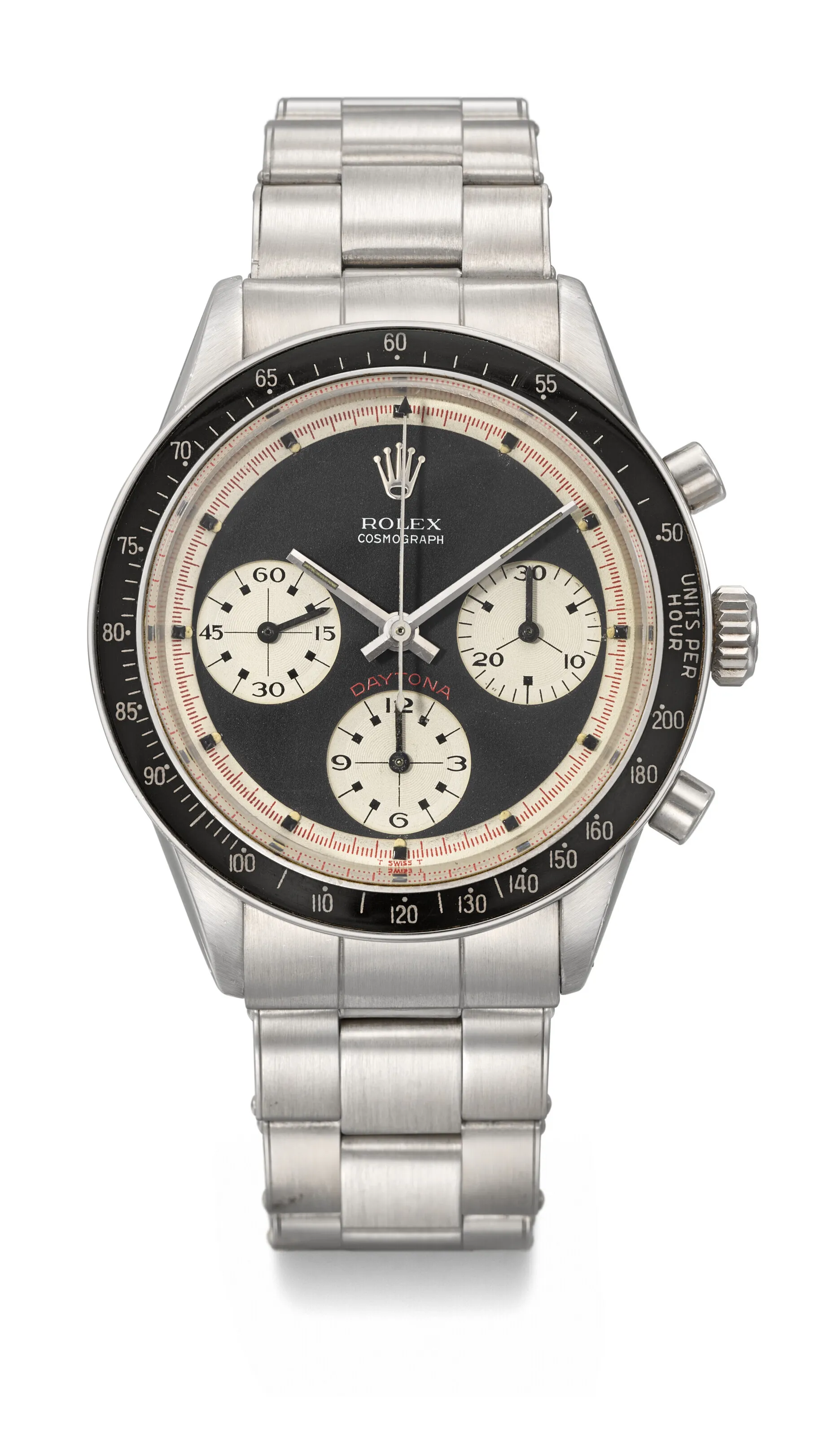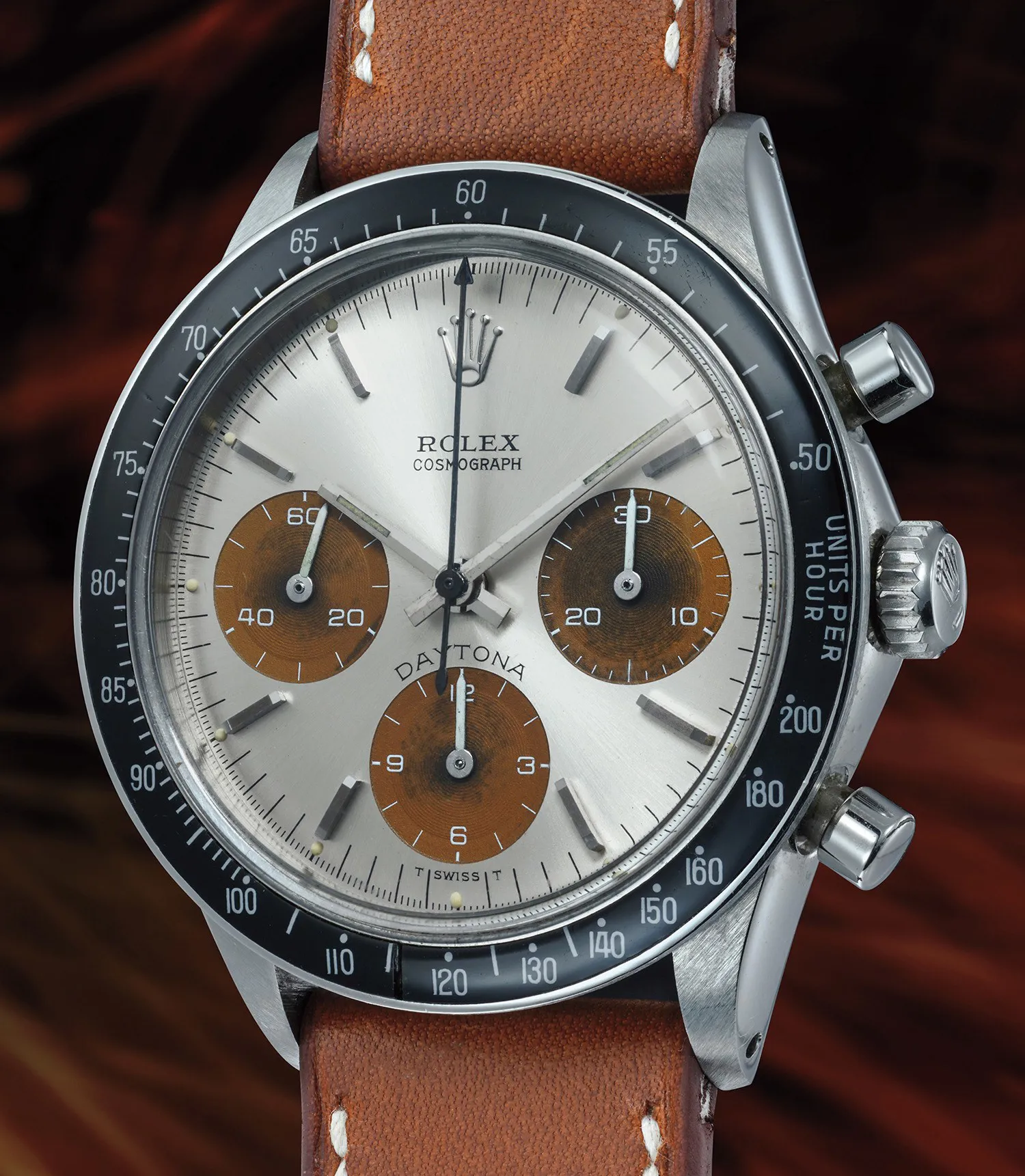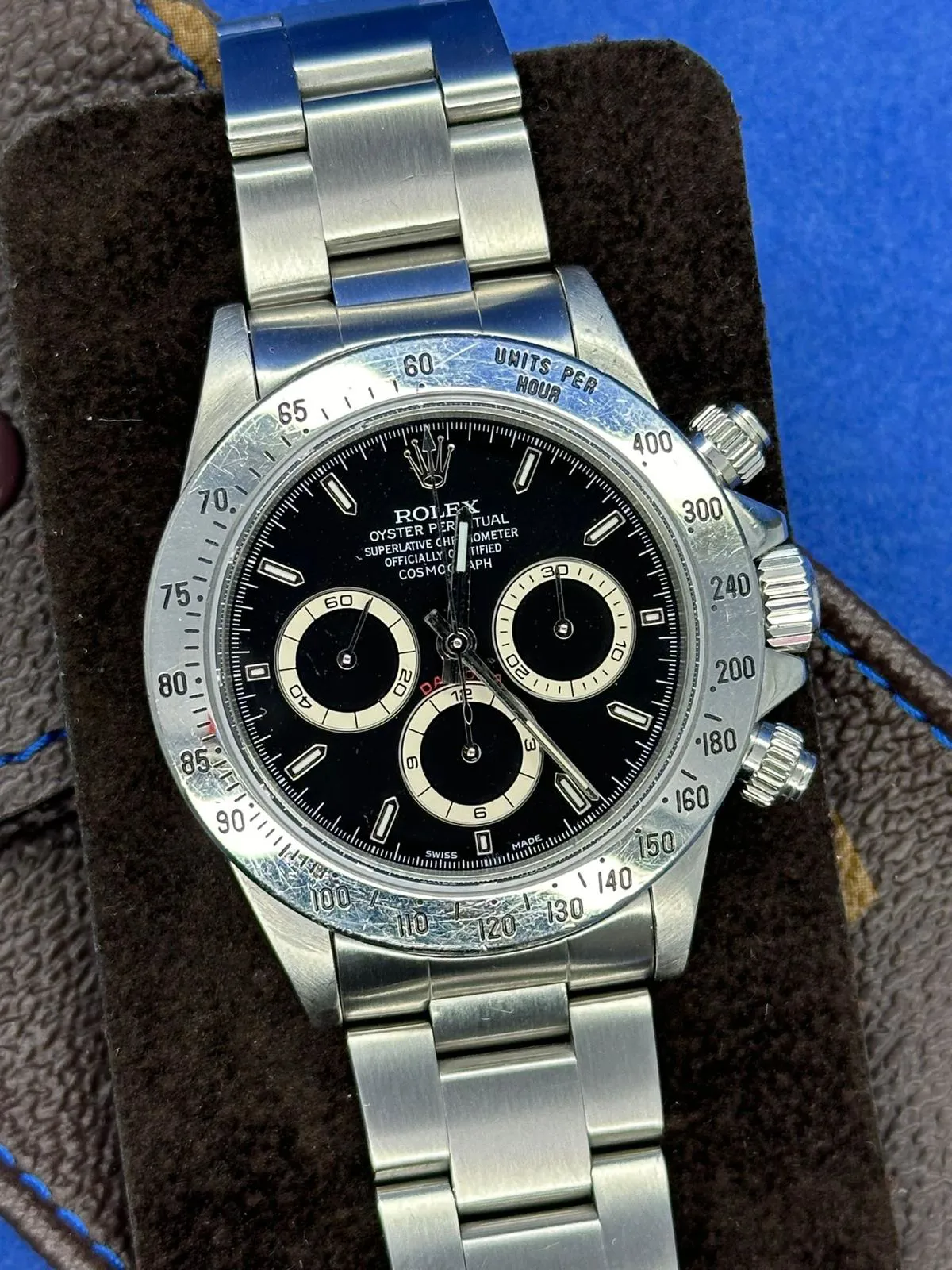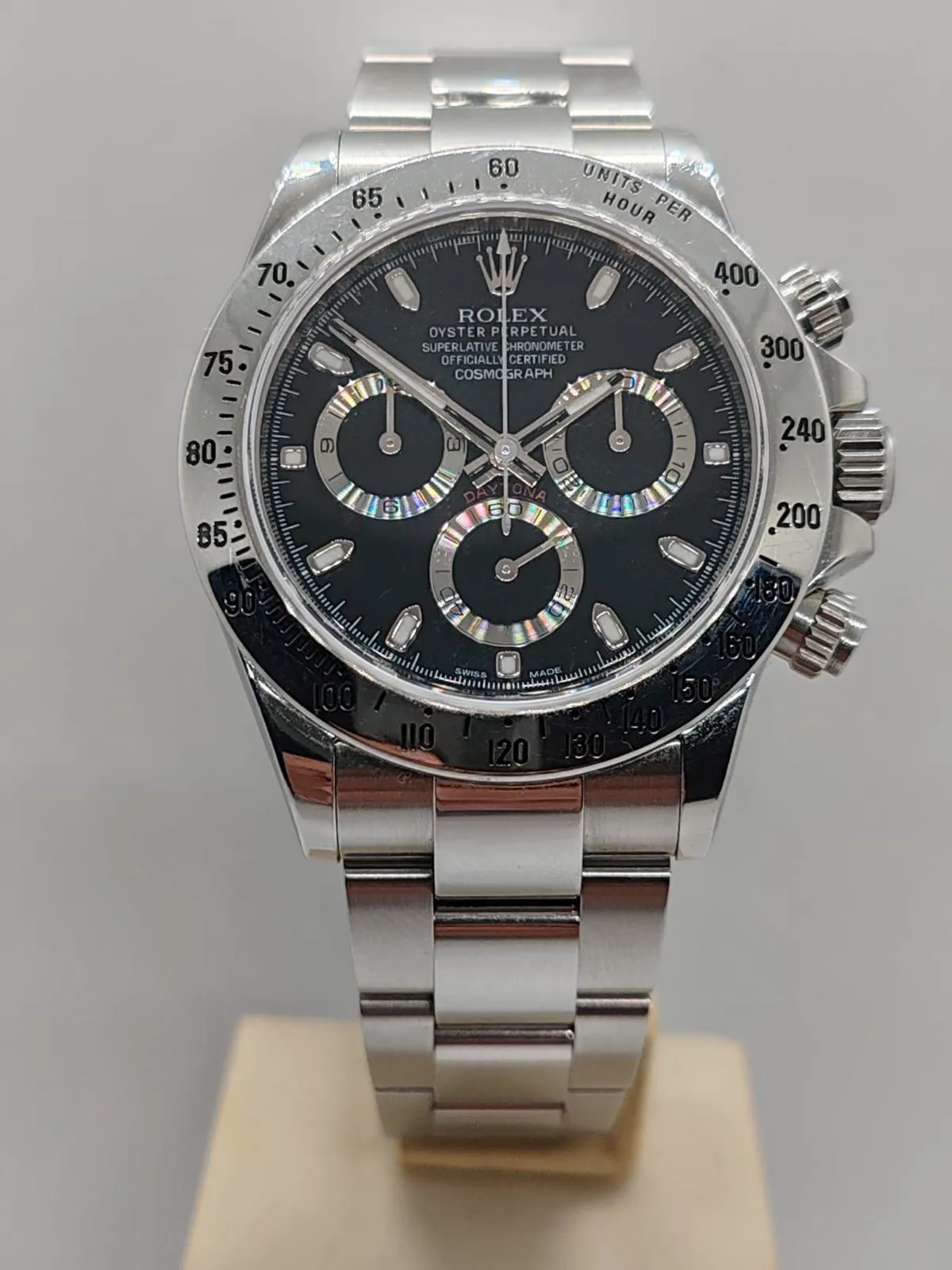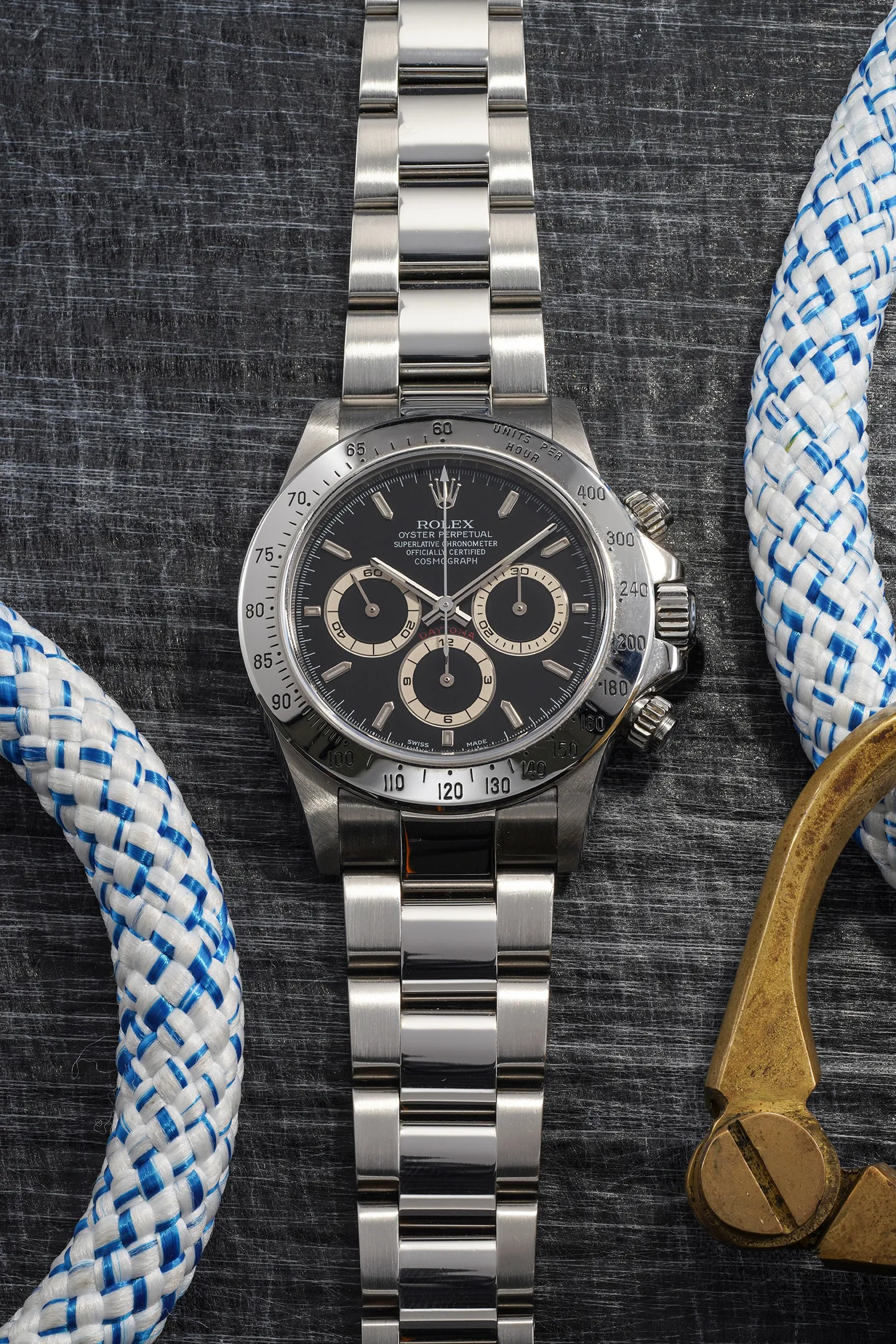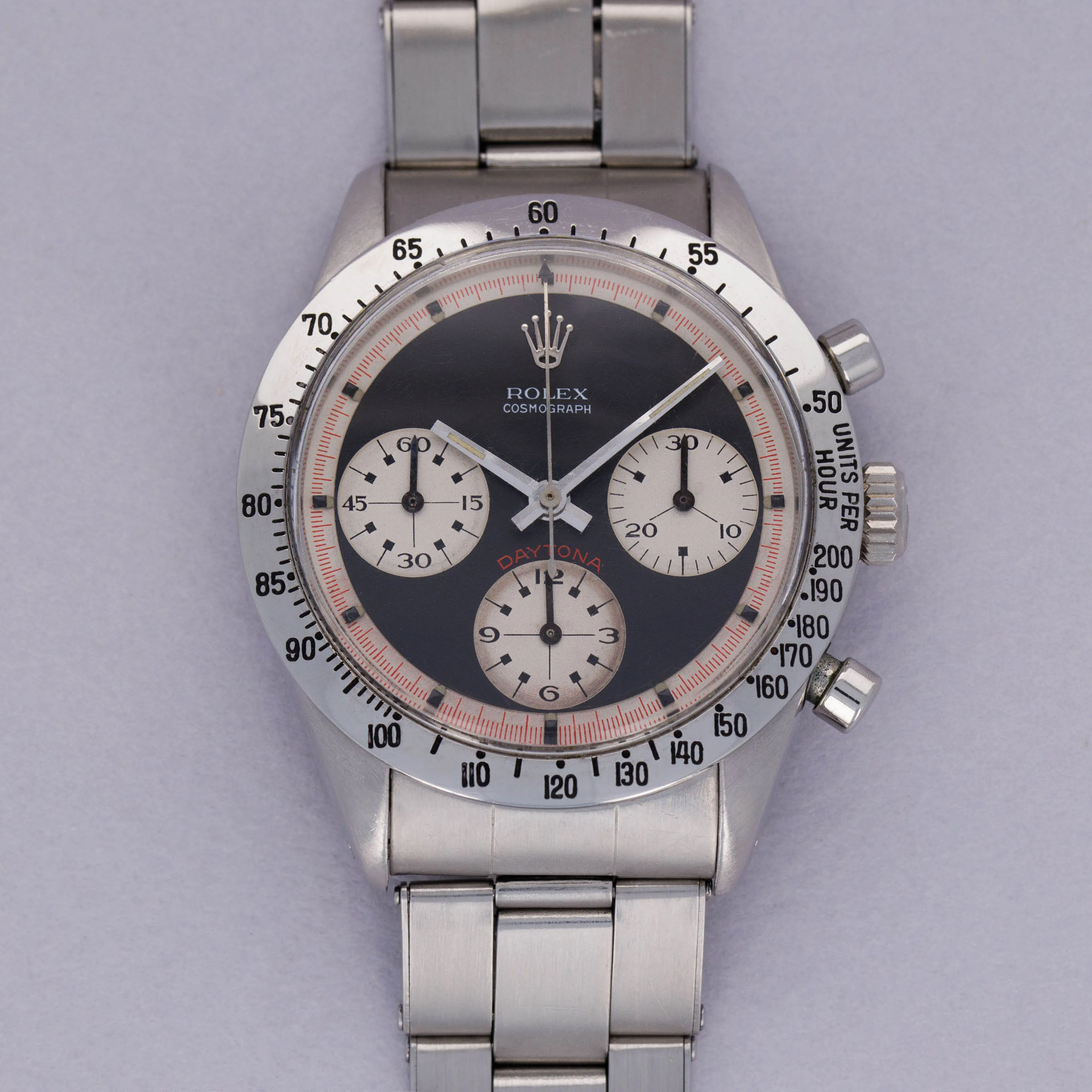Source:
Event:
Date:
Lot Number:
Condition: -
Year of Production: 1972
Case Size: 37mm
Case Material: Stainless steel
Dial Color: Black
Bracelet/Strap: Stainless steel
Movement Type: Mechanical
Box: Yes
Papers: No
Location: France
Estimates 108,133 - 129,759 USD
Sale Price
Description
ROLEX OYSTER COSMOGRAPH DAYTONA
Steel chronograph wristwatch for men, brown dial, faceted steel hour-markers, small seconds at nine o'clock, 30-minute totalizer at three o'clock and 12-hour totalizer at six o'clock, baton hands. Black bezel insert. Steel caseback signed ROLEX reference 6264. Case reference 6263 and numbered 30998** between the lugs. Rolex calibre 727 hand-wound mechanical movement. Folded steel Oyster-type bracelet reference 7835/19, end pieces 357, engraved 3/72. Watch functional at time of appraisal, with no guarantee of future operation or condition of parts. Accompanied by Rolex box, booklet stamped 6263 with Rolex booklets, official chronometer certificate perforated with watch serial number. Watch probably purchased in Hong Kong according to the chronometer paper stamp. Pushers, crown and service tube.
Circa 1972
Diameter 37 mm The 20th century was a fabulous period for the development of chronograph wristwatches. Rolex was obviously involved, and in 1963 presented a certain Cosmograph "Le Mans" chronograph under the reference 6239. The name Daytona would only appear a year later in the brand's communications, an obvious link, like its Speedmaster brother, to the world of motor racing. Several references would follow one another, often living at the same time. The first reference to incorporate major changes was number 6240. It saw the introduction of a feature common to many Daytona chronographs: screw-in pushers to guarantee water-resistance, replacing the classic pump pushers. The vast majority of these models will not bear the Daytona logo on their dial. Turning now to movements, we should mention reference 6262, an evolution of reference 6239, with the introduction of the Valjoux 727 movement to replace Valjoux 722. To sum up all these transitions and changes, both in terms of pushers and movement, the model we are presenting today was born in 1971: reference 6263. The first iterations of this reference saw their dial paint, originally black, change color over time to brown. A pigment defect that has become a rare feature of these "Tropical" chronographs. Our example comes with a caseback reference 6264, not surprising given that the casebuilder for these Rolex 6263s at the time, C. R. Spillman Cie, used leftover casebacks from remaining references 6262 and 6264.











